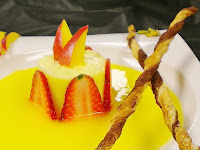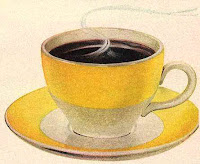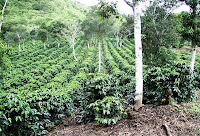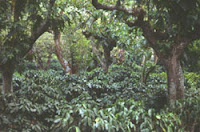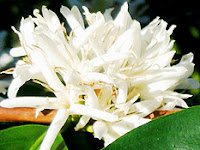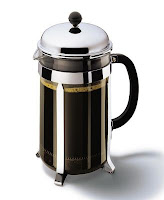 To me, there is no better after dinner apéritif than a good Port and I have been a fan for quite some time. The older and dryer the better. Elegant yet bold, a good glass of Port, Porto, or whichever moniker you prefer, is the perfect ending to a great meal. Come with me on an exploration of Port Wine, its history and its terrior.
To me, there is no better after dinner apéritif than a good Port and I have been a fan for quite some time. The older and dryer the better. Elegant yet bold, a good glass of Port, Porto, or whichever moniker you prefer, is the perfect ending to a great meal. Come with me on an exploration of Port Wine, its history and its terrior. |
| Douro Valley |
 |
| A rabelos; flat bottom boat |
Port, from Portugal, comes in several styles, which can be divided into two broad categories:
- Wines that are matured in sealed tanks or bottles with no exposure to air experiencing what is known as reductive aging. This process leads to the wine losing its color very slowly, producing a wine which is smoother on the palate and less tannic.
- Wines that are matured in wooden barrels, whose permeability allows a small amount of exposure to oxygen experiencing what is known as oxidative aging. They also lose color, but at a faster pace. If red grapes are used, in time the red color lightens to a tawny color obviously the origin of the descriptor, tawny. They also lose volume to evaporation, leaving behind a wine that is slightly more viscous and intense. As a result, they gradually mellow to a golden-brown color. The exposure to wood imparts nutty flavors to the wine, which is blended to match the particular house style.
Ruby Port
Ruby Port is a blend from several harvests, different years and different quintas. It spends a minimum of two years in very large vats before being bottled. The large vats minimize the amount of air that comes in contact with the wine, which reduces oxidization so the wine retains its bright red hue. Ready to drink when it is bottled, it has a rich red color and a full fruity taste. It is the cheapest and most extensively produced type of Port. The wine is usually blended to match the style of the brand to which it is to be sold. The wine is fined and cold filtered before bottling and does not generally improve with age.
Aged Tawny Port
Aged Tawny is the best Tawny Port. It can have an age of 10, 20, 30 or more than 40 years. The age will be indicated on the label and describes the average age of the wines in the blend. In a twenty year old aged Tawny, there may be some 100 year old Ports added, to give more complexity to the wine. Aged Tawny port has a refined, subtle taste.
White Port
White Ports have a lighter taste and vary from quite sweet to very dry. The sweetest are called lagrima. White Port is made from white grapes, and should always be served cool or cold. It can be used as the basis for a cocktail, or served on its own. There is a range of styles of white Port, from dry to very sweet. These wines are made from a blend white grapes from different vineyards and different quintas and may have a small amount of juice from red grapes. The wine spends two to three years in casks and is ready to drink when it is bottled. White port is usually served as an aperitif and makes a very tasty and refreshing drink called a Port Splash or Portonic (mix of half White Port, half tonic water, ice and a twist of lemon)
Crusted Port
Crusted Port is a type of Ruby and spends three years in a cask, but most of its aging is in a bottle. It is a blend of wines from several different years and gets its name from the sediment that appears in the bottle as the wine ages, since the wine is not filtered. This crust is mainly tiny pieces of grape skin plus bits of seed and stems that settle in the lowest part of the bottle. Sediment does not taste or feel good so the Port must be decanted.
Vintage Character
Vintage Character Port is a higher quality Ruby blend of port wines that ages four to six years in the cask - "in wood". It is filtered to remove any sediment then bottled. Vintage Character is a full-bodied, fruity wine.
Single Quinta Port
Single-Quinta Ports are made with wine from one vineyard. They may be Tawny or Vintage styles. After aging two years in wood, they are bottled and spend from 5 to 50 years maturing. The label will indicate the Vintage year and bottling date. Single quinta Port has a complex and refined taste.
Late Bottled Vintage Port
Late-Bottled Vintage port (LBV) is made from grapes grown in a single year. The Port is aged four to six years in wood before bottling. The label will indicate the Vintage and bottling date. The LBV port is ready to drink earlier than Vintage port and when labeled Traditional, it may have some sediment. For this reason, L.B.V Traditional Ports, like Vintage Ports, needs decanting.
Vintage Port
Vintage Port comes from a single harvest of exceptional quality and is bottled after two years in wood. The wine then spends many years aging in the bottle (in glass) and the label will show the year of the Vintage and the year the wine was bottled. This is one of the most sought-after and rare wines in the world, From 1901 to 1999, only fourteen Port Vintages have been declared.
Although it accounts for only about two percent of production, Vintage Port is the flagship wine of all Portugal. It is made entirely from the grapes of a declared vintage year. Not every year is declared a vintage in the Douro; only being declared when conditions are favorable to the production of a fine and lasting wine. The decision to declare a vintage is made by each individual Port House, often referred to as a 'shipper'. The Port industry is one where reputations are hard won and easily lost, so the decision is never taken lightly. During periods of recession and war, potential 'declarations' have sometimes been missed for economic reasons. In recent years, some shippers have adopted the 'chateau' principle for declarations, declaring all but the worst years. More conventional shippers will declare, on average, about three times a decade.
While it is by far the most renowned type of Porto, from a volume and revenue standpoint, Vintage Port actually makes up only a small percentage of the production of most shippers. Vintage Ports are aged in barrels for a maximum of two and a half years before bottling and generally require another ten to thirty years of aging in the bottle before reaching what is considered a proper drinking age. Since they are aged in barrels for only a short time, they retain their dark ruby color and fresh fruit flavors. Particularly fine Vintage Ports can continue to gain complexity and drink wonderfully for many decades after they were bottled and therefore can be particularly sought-after and expensive wines. That said, compared with the very high prices of
 Bordeaux wines, vintage ports, even from the best years (at least from smaller concerns) are still affordable, albeit for many only for special occasions. Wine dealers, specializing in fine wines in the United Kingdom have, for example, excellent examples (some over twenty years old) at around $51, with the very best starting at around $122 per bottle (2008 prices) or even less. Examples of the famed 1963 vintage are available at time of writing for $145 (Cockburns 1963, bottle, duty paid). Similar classics from Bordeaux and Burgundy are sold in the hundreds, sometimes thousands of dollars, even for recent vintages. The situation in the United States is much the same.
Bordeaux wines, vintage ports, even from the best years (at least from smaller concerns) are still affordable, albeit for many only for special occasions. Wine dealers, specializing in fine wines in the United Kingdom have, for example, excellent examples (some over twenty years old) at around $51, with the very best starting at around $122 per bottle (2008 prices) or even less. Examples of the famed 1963 vintage are available at time of writing for $145 (Cockburns 1963, bottle, duty paid). Similar classics from Bordeaux and Burgundy are sold in the hundreds, sometimes thousands of dollars, even for recent vintages. The situation in the United States is much the same. |
| Batalha Monastery |
Bridges and roads built by Roman soldiers in Portugal are still used today and Roman officers often wrote about wine from the Douro Valley region, so we know its history goes back at least two thousand years. The commercial production of Port Wine is much more recent. In 1678, two English merchants traveling through Portugal stayed one night at a monastery in Lamego. At dinner, they enjoyed a wine they had never tasted before. This may well have been the first taste of port by the English and the two merchants quickly realized the wine's export potential. There are many other stories about the origins of Port Wine but this is the one most accepted. It is interesting to note that in the 17th Century, not even the people in the country's capital Lisbon, about 300 kilometres away, knew much about the wine produced in the Douro Valley.
By the 18th Century, the English completely dominated the Port Trade and demand for the product during the Napoleonic Wars was very high, because French wine was not available. The English involvement explains why so many of the terms relating to the wine, its organizations, labels and producing company names are not Portuguese.
 |
| Baron de Forrester |
He spent two years surveying the Douro Valley, drawing extraordinarily detailed maps of the region. He lived aboard a kind of boat designed specifically for travel on this fast-moving river called a barco rabelo. Ironically, he drowned when his boat overturned in one of the rapids. He was wearing a money belt filled with gold coins to pay his workers, which weighed him down and his body was never recovered.
As the Port trade grew and became more lucrative, the King of Portugal took steps to regain control from the English in the late 18th century. He sent his Minister, the Marquês de Pombal, to lay out the grape growing area of the Douro. Many original demarcation posts still stand because they were made of the natural rock of the Douro called schist. This is the very first demarcated wine region in the world.
 |
| Dona Ferreira |
Port became very popular in England after the Methuen Treaty of 1703, when merchants were permitted to import it at a low duty, while war with France deprived English wine drinkers of French wine. The long trip to England often resulted in spoiled wine; the fortification of the wine was introduced to improve the shipping and shelf-life of the wine for its journey. The continued English involvement in the Port trade can be seen in the names of many port shippers: Cockburn, Croft, Dow, Graham, Osborne, Sandeman, Taylor and Warre being amongst the best known. Shippers of Dutch and German origin are also prominent, such as Niepoort and Burmester.
The Proper Way To Enjoy Port
 |
| Hoggett Decanter |
Storing
Port, like other wine, should be stored in a cool, but not cold, dark location (as light can damage the port), with a steady temperature, laying the bottle on its side if the bottle has a cork, or standing up if stoppered. By storing with the label up, you can identify the Port without disturbing the bottle. More importantly, however, any sediment in the port collects in the lowest part of the bottle. When you pick the wine up, carry and decant it, you should hold the bottle in the same position with the label up. This insures that the sediment will stay in the same place and you can pour the Port off it more easily. Once opened, Port wines must be consumed within a short period of time. (another rule I like, lol) Those with stoppers can be kept for a couple of months in a dark place, but if it has a cork, it must be consumed sooner. Typically, the older the vintage, the quicker it must you must drink it.
Port wines that are unfiltered (Such as Vintage ports, Crusted and some LBVs), form a sediment (or crust) in the bottle and require decanting. This process also allows the port to breathe; however, how long before serving is dependent on the age of the port (particularly in the case of Vintage Ports, which, once decanted are recommended to be consumed within 3-4 days.)
Porto lies just to the north of a coastal Mediterranean climate zone that encompasses most of central and southern Portugal. As a result, its climate shares many characteristics with the coastal south: temperate dry summers and mild rainy winters. Unlike the south, however, cool and rainy interludes can interrupt the summer dry season and the season's average length is considerably shorter. Also, the city's more northern position and coastal location off the Atlantic often results in notably cooler weather in Porto than to its south, especially during summer. The city is located in the estuary of the Douro river in northern Portugal. The largest city in the region, Porto is considered the economic and cultural heart of the entire region.
 |
| City of Port, Portugal |
In the 14th and the 15th centuries, the shipyards of Porto contributed to the development of the Portuguese fleet. In 1415, Henry the Navigator, son of João I, left from Porto to conquest the Muslim port of Ceuta in northern Morocco. This expedition led to the exploratory voyages that he later sent down the coast of Africa. Portuenses are referred to this day as tripeiros, in reference to the fact that higher quality meat would be loaded onto ships to feed sailors, while off-cuts and by-products such as tripe would be left behind and eaten by the citizens of Porto. Tripe remains a culturally important dish in modern day Porto.
Wine, produced in the Douro valley, was already in the 13th century, transported to Porto in barcos rabelos (flat sailing vessels). In 1703 the Methuen Treaty established the trade relations between Portugal and England. It allowed English woolen cloth to be admitted into Portugal free of duty. In return, Portuguese wines imported into England would be subject to a third less duty in contrast to French imported wines. This was particularly important with regards to the Port industry.
As England was at war with France it became increasingly difficult to acquire wine and so Port started to become a popular replacement. In 1717 a first English trading post was established in Porto. The production of Port wine then gradually passed into the hands of a few English firms. To counter this English dominance, prime minister Marquis of Pombal established a Portuguese firm receiving the monopoly of the wines from the Douro valley. He demarcated the region for production of port, to ensure the
This year The Center, a Washington D.C.-based organization founded in 2005 by the wine growing regions of Porto, Portugal and Champagne, France, announced on January 27th the first-ever International Port Day. This inaugural event is an effort to remind consumers about the importance of the fortified wine.
Here are a few recommendations from Wine Enthusiast Magazine for you to try:
94 Fonseca 2004 Quinta do Panascal Vintage Port
In the Fonseca tradition, this is a hugely rich wine, very dense. It is not all weight, with excellently integrated firm tannins and a range of complex flavors, from nuts and berry fruits to full frontal ripeness. There is some dryness to finish.
abv: 20% Price: $49
A powerhouse, but one that shows a certain degree of lushness to its robust blackberry and mint flavors. Finishes long and minerally, bolstered by slightly drying tannins. Should be more approachable by 2015 and last for three decades beyond that. Premium Port Wines Inc.
abv: NA% Price: $80
Aged for around 30 years in wood, this wine has gained the most delicious toffee character to go with the old gold feel and wood acidity. There is a lovely rounded character, so smooth as well as intense. The Port is bottled ready to drink. Maisons Marques & Domaines USA.
abv: 19.5% Price: $110
abv: 20.5% Price: $60
I hope this little journey has whet your appetite to try Port wines. I have found that the more I know about a product, be it food, wine or otherwise, the more I find I enjoy its nuances and specialties. My goal is that these articles do the same for you. So do yourself a favor and discover the joys of drinking port for yourself. You'll be glad you did.
en.wikipedia.org, FreeDigitalPhotos.net winecommune.com Wine Enthusiast Magazine









